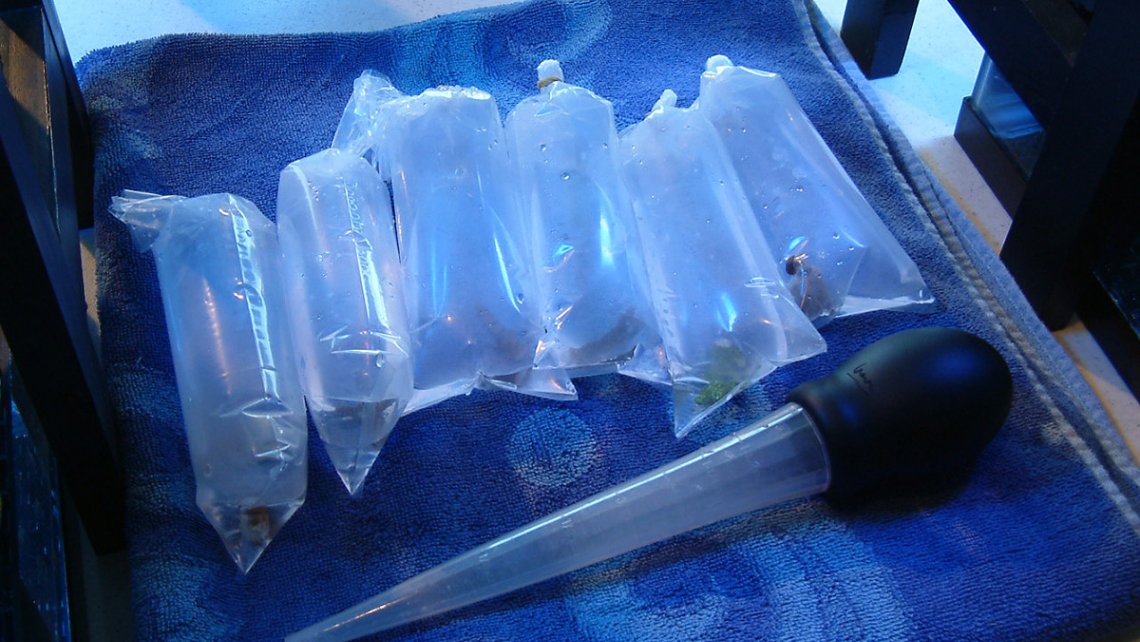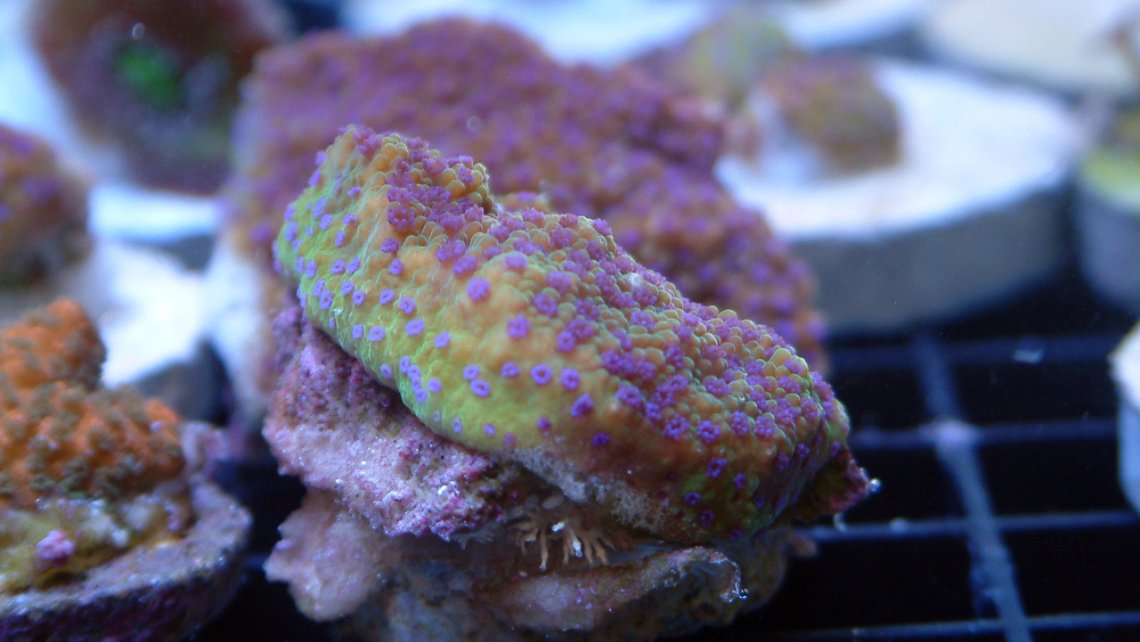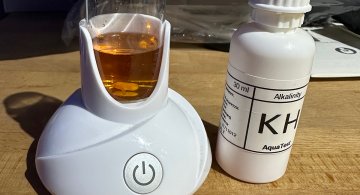Preventative Dips
Do you practice safe reefkeeping? No matter where you go, no matter how much money is in your bank account, when you see that new coral you just have to have, there’s no chance you’ll let it elude your collection. This time of year, many clubs hold Frag Swaps where coral fragments are sold or traded with other hobbyists. What concerns me is what happens next. In my club, I see pictures posted – within mere hours of the event -- of the new acquisitions in their display tanks. Dipping new corals in iodine for 10 minutes, then placing them in a tank is not what I consider smart nor safe. And forget about trusting the vendor or friendly hobbyists; this isn’t about trust. This is about protecting your investment and keeping your sanity. Some sellers are completely unaware of any possible pests, and others knowingly sell the livestock stating that the buyer should know what to do. Do you know what to look for? Do you simply acclimated it to temperature and drop it in?
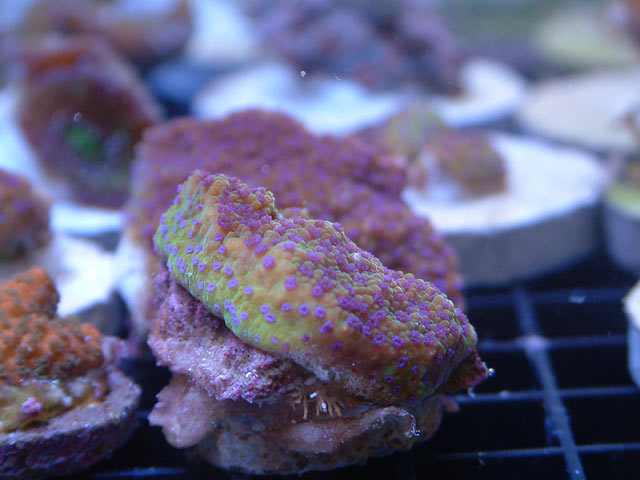
Do you see anything wrong in this picture? That prickly thing under the front edge of the Montipora eats this coral.
Practicing safe reefkeeping requires that we continually quarantine all new arrivals to avoid adding pests to our tanks. It’s a necessary step to keeping unwanted critters out of our reefs, because once they are in, it’s a real battle if we hope to eliminate their presence and protect our livestock. In school we learned about safe sex and how to avoid STDs; every person in this hobby needs to do the same to reduce the risks and stem the tide of spreading parasites to other healthy systems. Red Bugs, Acropora-eating Flat Worms (AEFW), Red Planaria, predatory Whelks, Blue Asterinas, voracious Amphipods, and Montipora-eating nudibranchs are some of the well-known vile critters we want to avoid, and we have a variety of products at our disposal. Most of these are available at your local fish store, and one will require a vet’s prescription. If you’ve never quarantined before and your tank appears healthy, consider yourself lucky. It’s only a matter of time before you add that ticking time bomb to your tank that causes serious regret on your part and forces you to make some major changes or watch those losses pile up. Instead, starting today, will you commit to becoming proactive instead of reactive? If your tank has some pests already, that’s something you’ll need to address yourself, but at least you can guarantee that you won’t add any new ones from this point forward. That’s what I told myself many years ago, and it has worked out very well.
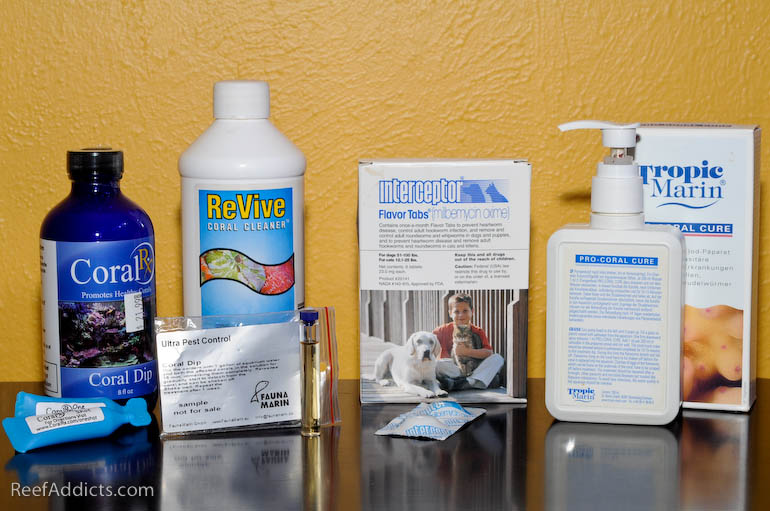
All you need is a small aquarium, some saltwater from your tank, a heater, a powerhead, a thermometer, and a little patience. Ideally, it’s best to keep the quarantine tank (QT) running at all times, topping it off for evaporation so any new purchase can easily be placed in for observation and treatment. If you can’t keep it running all the time, can you set it up for 12 hours? Drain out enough water from your display tank for the quarantine system, and replenish that water with new saltwater. Not only are you helping prevent a possible infestation, you’ve just performed a small water change. Congratulations!
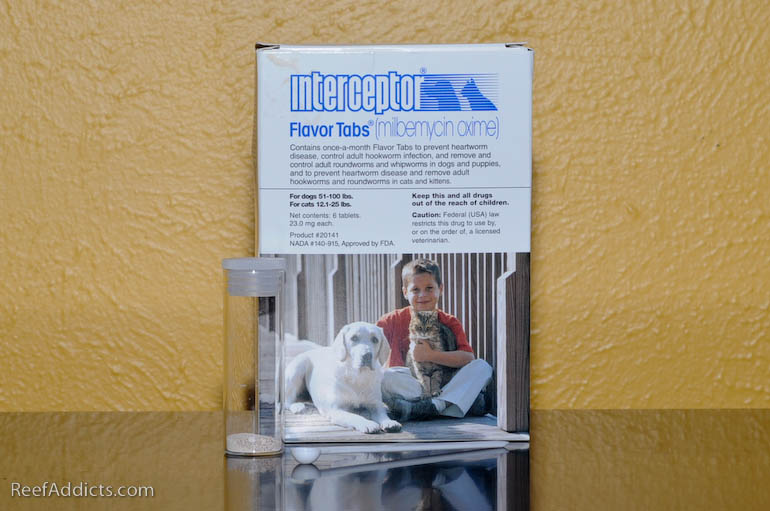
Crush up a single tablet of Interceptor and keep it ready in a sealed vial or similar container. This product will kill Red Bugs, tiny fleas that chew on Acropora sp tissue. Using a tiny scoop from a Salifert test kit, add one scoop to your QT and mix it in for the new coral(s) to bathe in for 12 hours. Red Bugs can come in on virtually any coral, so every last one of them should go through this routine. A single tablet treats 400-gallons of water, and with the small scoop you will be able to treat five sessions’ worth.. I’ve never lost any SPS to this dosage, even though my QT holds 12-gallons. During a recent trip to Florida, I came home with about 15 frags that went straight into QT that night, along with Interceptor, and while I slept the medication worked its magic.
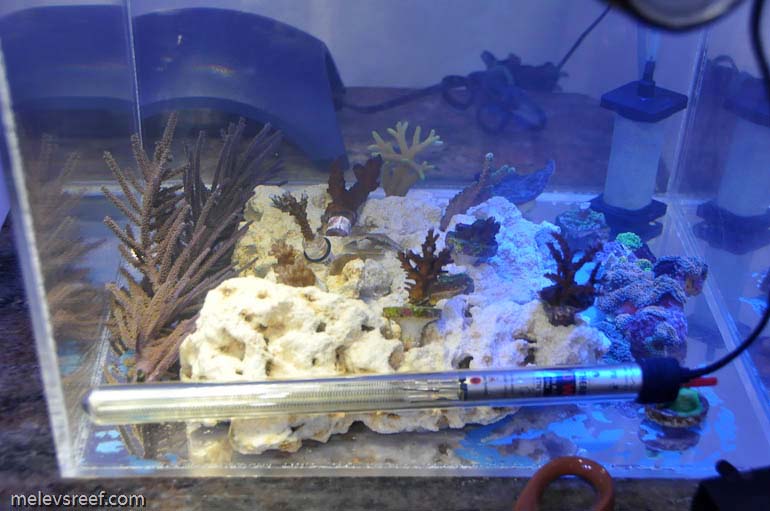
People contact me regularly asking how to acquire Interceptor. My vet recommends: Plan to pay for an office visit, and bring a picture of your aquarium for the vet to staple to the patient chart. Purchase a box of tablets, which will treat your entire system and have plenty on hand for every quarantine session for the next couple of years. Don’t try to get the vet to sell you a single pill, and don’t try to obtain it illegally from someone else. This is another example of why this hobby is expensive, but definitely not out of our reach.

The next day, take the coral and place it in smaller container and add a product like Coral Rx or ReVive for 10 minutes, setting a timer to 10 minutes. During that dip, circulate the water with a turkey baster at least two times, blowing off the coral from every angle to make sure any hitchhikers have been blown off. I placed a few corals in the dip at a time, that way I didn’t have to deal with too many at once. When the timer chimes, remove all the corals and rinse them off in saltwater from the QT. The one thing you don’t want to do is remove the corals and place them in your tank immediately one by one, leaving the last coral in that dip solution for 20 – 30 minutes instead of only 10 minutes because you had so many to work with. Working with small batches is best, placing corals in the display while the next group is soaking.

Before placing these newly dipped corals in your tank, inspect them closely under a magnifying glass. Don’ worry, they won’t be hurt by being in air for a few minutes. Do you see any tiny egg clusters? Is anything crawling around the base? Are there any signs of moment of worms or nudibranchs, things you didn’t intentionally want to add to your tank? While the SPS coral is out of water and beginning to dry off a little, do you see shiny patches? Those might be AEFW. I’ve been a reef keeper for more than a decade, and the reason I quarantine every new arrival is because I want to enjoy my livestock rather than worry about their distress. If I lose a frag to QT, so be it. My reef continues to flourish.
The cost of setting up a QT is minimal, and most of us have some used gear on hand that could be used. If you don’t, spend $50 to $100 for a quarantine tank. That investment will pay for itself a hundred times over. Remember, be proactive!
